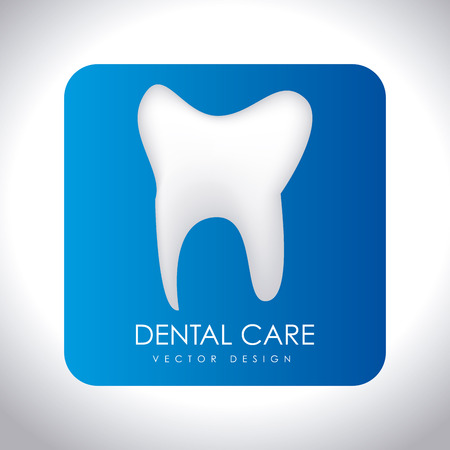Understanding NHS vs Private Dental and Optical Care
When considering dental and optical health for children in the UK, it is essential for parents to understand the differences between NHS and private care services. The NHS (National Health Service) provides free dental and optical care for children under 18, or under 19 if they are in full-time education. This includes routine check-ups, treatments such as fillings, extractions, and basic sight tests. Eligibility is straightforward: as long as your child is a UK resident, they are entitled to these NHS services without charge. However, the range of treatments on the NHS may be limited compared to what private providers offer. For example, cosmetic dental treatments or premium spectacle frames typically fall outside NHS coverage and incur additional costs if chosen privately. The typical care pathway under the NHS involves registering with an NHS dentist or optician and attending regular appointments as recommended. In contrast, private dental and optical care allows for more flexible appointment times, access to a wider variety of materials or treatments, and shorter waiting lists—but at a higher out-of-pocket cost to families. Understanding these distinctions helps parents make informed decisions regarding insurance options and how best to support their children’s oral and visual health.
What’s Covered Under Standard Children’s Health Insurance
When it comes to safeguarding your child’s dental and optical health, understanding what standard children’s health insurance policies offer in the UK is essential. Most policies are designed to complement NHS services rather than fully replace them, with varying degrees of cover based on the insurer and chosen plan. Below is a breakdown of typical inclusions and exclusions you can expect:
Dental Cover: What’s Included?
| Treatment | NHS Coverage for Children | Standard Private Insurance Coverage |
|---|---|---|
| Routine check-ups | Free up to age 18 (or 19 if in full-time education) | May cover private check-ups, subject to annual limits |
| Fillings & Extractions | Free under NHS | Often limited; may require co-payment or only cover specific treatments |
| Orthodontic treatment (e.g., braces) | Covered on NHS if deemed medically necessary | Usually excluded or offered as an optional extra with higher premiums |
| Preventative treatments (sealants, fluoride varnish) | Included under NHS | Varies; sometimes included but often limited by policy terms |
Optical Cover: What’s Included?
| Treatment | NHS Coverage for Children | Standard Private Insurance Coverage |
|---|---|---|
| Eye tests | Free up to age 16 (or 18 if in full-time education) | Covers additional private eye tests, often annually |
| Glasses & contact lenses | NHS vouchers available towards cost | Usually a set annual allowance for frames/lenses; higher-end brands rarely covered in full |
| Treatment for eye conditions (e.g., infections) | Certain treatments covered by NHS | May require GP referral; not all conditions included as standard |
Common Exclusions in Standard Policies
- Cosmetic dental procedures (e.g., teeth whitening, veneers)
- Non-essential orthodontics (for aesthetic reasons only)
- Sunglasses and designer optical frames beyond voucher value or policy allowance
- Treatments without prior GP or specialist referral (depending on insurer)
- Treatments outside the UK unless specified in international coverage options
Navigating Policy Terms: Key Considerations for Parents
It is crucial for parents to read policy documents carefully. Many standard health insurance plans have annual claim limits, waiting periods before benefits begin, and require evidence of medical necessity. Always clarify whether the policy is intended to supplement NHS care or provide access to private practitioners. Understanding these distinctions helps avoid unexpected costs and ensures your child receives the best possible dental and optical care within the UK system.

3. Essential Policy Features to Look For
When considering dental and optical insurance for your children in the UK, it is crucial to identify policy features that genuinely support your child’s health needs and offer value for money. Below, we break down key elements parents should prioritise when evaluating insurance options.
Annual Check-Ups
Comprehensive policies typically include annual dental and optical examinations. These routine check-ups are vital for early detection of issues such as cavities or vision problems, ensuring prompt intervention. Look for plans that cover or contribute towards the cost of at least one annual exam per year, ideally with minimal excess or co-payment requirements.
Emergency Treatment
Accidents can happen unexpectedly, especially with active children. Robust insurance should provide clear provisions for emergency dental work (such as chipped teeth) and urgent eye care (such as injuries or sudden vision loss). Confirm whether the policy covers both in-hours and out-of-hours emergencies, and check any requirements for pre-authorisation or using specific clinics.
Coverage Limits and Exclusions
Each policy will set its own coverage limits—maximum amounts payable per treatment, per year, or per claim. Parents should closely examine these figures to ensure they meet realistic costs for private dental and optical care in the UK. Additionally, review all exclusions: some policies do not cover orthodontics (braces), specialist treatments, or pre-existing conditions. Understanding these limitations prevents unexpected expenses later on.
Additional Considerations
Beyond the basics, consider if the policy includes preventive treatments (like fluoride varnishes or sealants), prescription glasses or contact lenses allowances, access to NHS and private providers, and flexibility in selecting practitioners. Some insurers also offer value-added services such as helplines for parental advice or discounts on family policies.
Summary
Selecting the right insurance involves careful scrutiny of annual check-up provisions, emergency cover, financial limits, and exclusions. By focusing on these core features, UK parents can secure peace of mind knowing their children’s dental and optical health is well protected under their chosen plan.
4. How to Claim: Navigating the Process
Making a claim on your child’s dental or optical health insurance in the UK involves several straightforward but essential steps. Understanding the process ensures you receive reimbursement efficiently and avoid unnecessary delays. Below is a step-by-step guide tailored for UK parents, along with a summary table of commonly required documents.
Step-by-Step Claim Process
Step 1: Check Your Policy Details
Before arranging any treatment, review your insurance policy documents to confirm which dental and optical services are covered for your child, including annual limits and eligible providers. Some policies require treatments to be carried out by NHS or registered private practitioners.
Step 2: Obtain an Itemised Invoice
After your child’s appointment, request an itemised invoice from the dental or optical provider. This should detail all treatments and associated costs, clearly stating your child’s name and the date of service.
Step 3: Collect Required Documents
You will typically need several supporting documents when making a claim. Refer to the table below for common requirements:
| Document | Description |
|---|---|
| Completed Claim Form | The official form provided by your insurer, filled out with accurate details |
| Itemised Invoice/Receipt | A breakdown of services rendered and corresponding costs |
| Proof of Payment | Bank statement or card receipt showing payment has been made |
| Treatment Report (if applicable) | Details of diagnosis and treatment plan from the practitioner |
| NHS Referral Letter (if required) | If claiming for private treatment that followed an NHS referral |
Step 4: Submit Your Claim
Submit all documents to your insurer through their preferred channel—this could be online via a secure portal, by post, or through email. Double-check deadlines; most insurers require claims to be submitted within a specified period after treatment (commonly 30–90 days).
Step 5: Await Assessment and Payment
Your insurer will assess your claim according to policy terms. If approved, reimbursement is typically made directly into your bank account. If further information is needed, they will contact you for clarification.
Top Tip for UK Parents:
Always keep copies of all documents submitted and note down reference numbers for future correspondence. Prompt communication with your insurer can help resolve any queries swiftly.
5. Maximising Value: Tips for Managing Costs
For UK parents, making the most of your child’s dental and optical insurance requires both strategic planning and an understanding of your policy’s details. The NHS offers free dental and optical care for children under 16 (or under 19 if in full-time education), but private insurance policies or enhanced coverage may still be desirable for broader choices or faster access to services. Here are practical strategies to help manage out-of-pocket expenses while maximising the value of your cover.
Understand Your Policy In-Depth
Begin by thoroughly reading your insurance policy. Identify what treatments are covered, annual limits, waiting periods, and any exclusions specific to paediatric care. Check whether your insurer requires you to use specific providers or if you have flexibility in choosing dentists and opticians. Knowing these details helps avoid unexpected costs.
Utilise Preventative Care Benefits
Many policies include preventative dental and optical check-ups as standard, sometimes with no excess or additional charge. Scheduling regular NHS check-ups ensures early identification of issues and can reduce the likelihood of expensive treatments later. Take advantage of these benefits even if your child currently has no obvious problems.
Coordinate NHS and Private Coverage
If you hold private insurance alongside NHS entitlements, coordinate usage wisely. For routine checks and basic treatments, use the NHS where possible. Save your private insurance for services not available through the NHS, such as certain orthodontic work or advanced optical tests, maximising the value from both systems without duplicating costs.
Shop Around for Providers
Some insurers partner with specific dental or optical practices, offering reduced rates or additional discounts when you use their network. Compare quotes from different providers for non-NHS treatments and check whether your policy reimburses up to a set amount or covers full costs within their approved network.
Claim Promptly and Keep Records
File claims as soon as possible after treatment to ensure timely reimbursement. Maintain clear records of appointments, receipts, and correspondence with both healthcare providers and insurers. This documentation is crucial if disputes arise regarding coverage or payment limits.
Review Policy Annually
Your family’s needs may change over time, so reassess your insurance annually. Consider increasing cover if your child develops more complex needs, or adjusting downwards if circumstances allow. Comparing policies each year can also highlight better deals on the market, ensuring you always receive optimal value for money.
6. Legal Protections and Parental Rights
Understanding your legal rights and the regulations surrounding children’s health insurance in the UK is essential for parents seeking optimal dental and optical care for their kids. The UK boasts robust consumer protections and statutory requirements that ensure children’s health needs are adequately covered, whether you rely on NHS services or opt for private insurance.
Key Consumer Rights under UK Law
The National Health Service (NHS) provides free dental and optical care for children under 16, or up to 18 if they are in full-time education. This entitlement is protected by law, ensuring no child is denied necessary treatment due to financial constraints. Private insurers operating in the UK must also comply with the Financial Conduct Authority (FCA) regulations, which safeguard policyholders against unfair practices and guarantee transparent communication about coverage terms.
The Children Act 1989 and Parental Responsibility
The Children Act 1989 underpins parental responsibility for a child’s health and welfare, giving parents the right to make decisions regarding healthcare treatments, insurance policies, and consent to procedures. Insurers cannot override these rights; parents must be fully informed and must consent to any changes affecting their child’s coverage.
Appeals, Complaints, and Additional Protections
If you feel your child’s insurance claim has been unfairly rejected, you can escalate complaints through the insurer’s internal process, then to the Financial Ombudsman Service if unresolved. Additionally, the Competition and Markets Authority (CMA) monitors private health insurance practices to prevent misleading advertising or restrictive policy clauses. Always review policy documents carefully, as UK regulations require clear explanation of exclusions, waiting periods, and benefit limits.
In summary, UK parents are empowered by strong legal frameworks that prioritise children’s dental and optical health. Staying informed about these rights enables you to advocate effectively for your child’s well-being and make confident decisions about their health insurance options.

